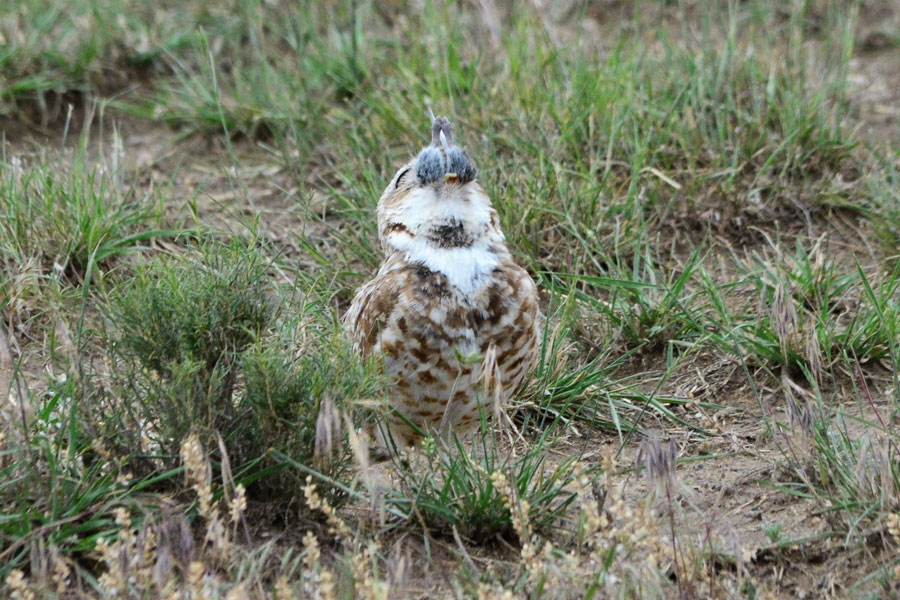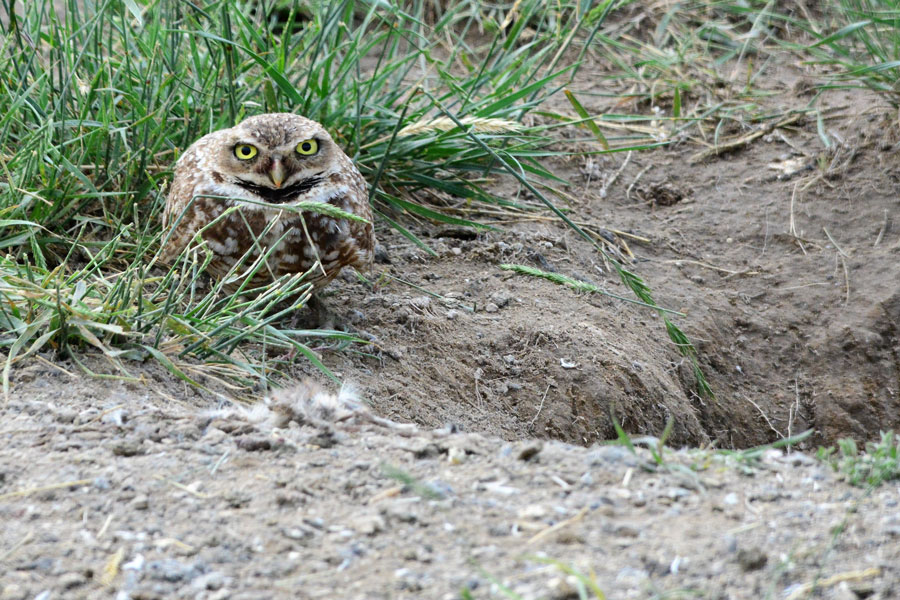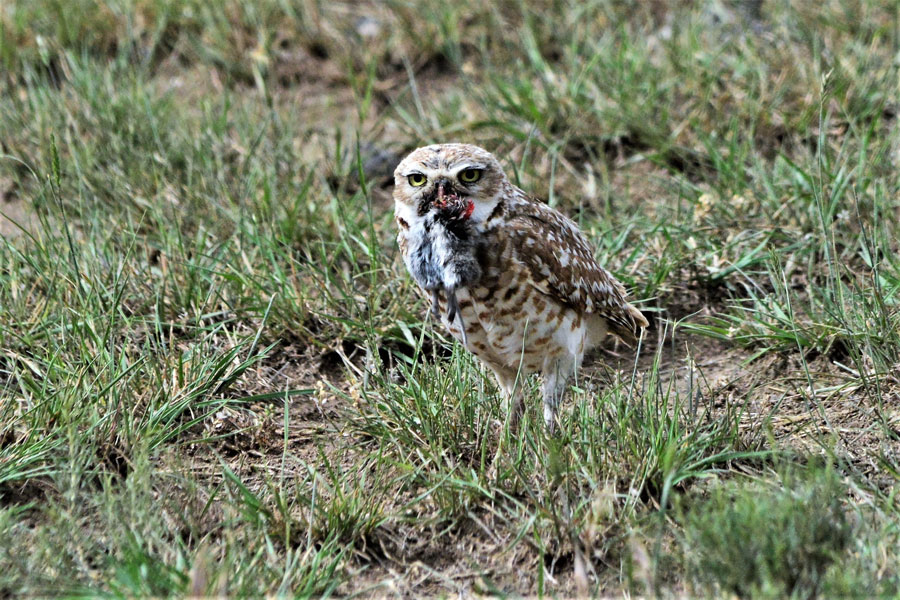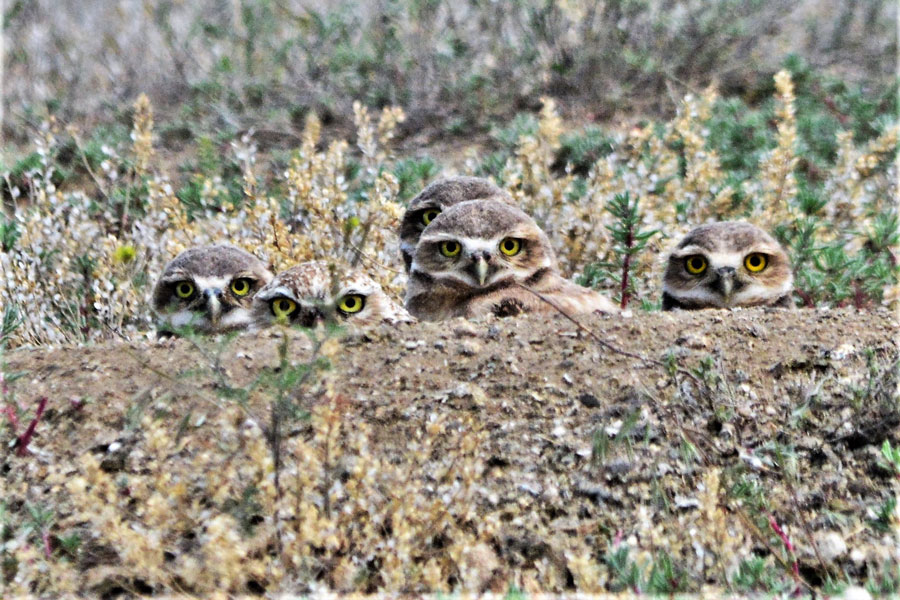An outdoor peep show that will entertain you for hours
Published at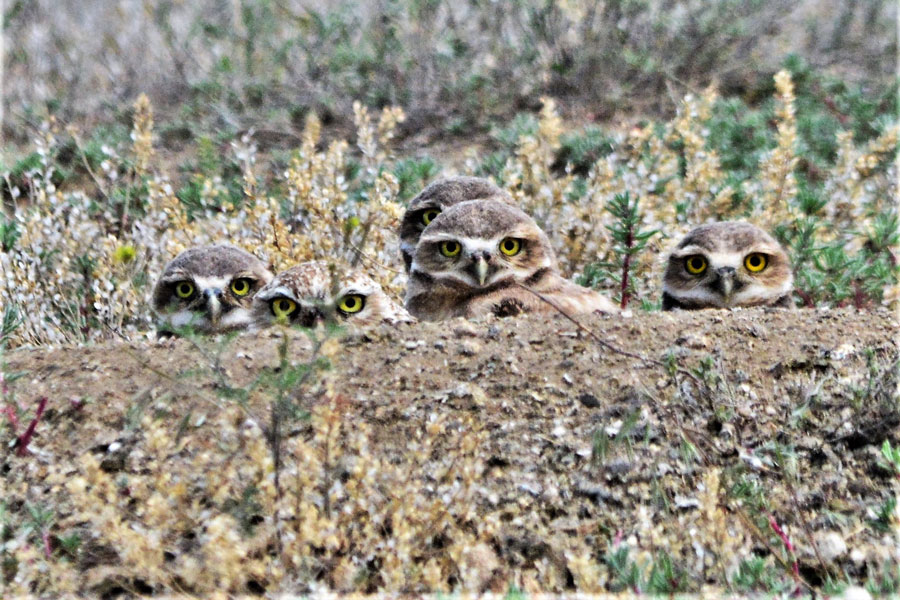
Five sets of eyes peered over the lip of the burrow as I pulled up near a Burrowing owl nest, one of six nests within 200 yards near the interstate between Sage Junction and Hamer. Two other owlets poked their heads out of another hole about 50 feet away.
A male in another burrow had captured a vole, ate its head and carried the rest down to the babes only to emerge later with about half of the rodent missing. It was hilarious to watch him try to swallow what remained; only to up-chuck it three times before picking it apart in smaller bites. The female watched the show from a nearby sage.
I have not seen the young owls from four of the six burrows but they should come out within the next week, so if you have located a Burrowing owl nest, you should start watching them from a distance. Once the youngsters become confident to be out of the burrow, they put on a show that only silly birds can put on.
Once the young emerge from the burrow, the fun begins. Their long legs make them look awkward as they play tag with each other. The twisting of the head and the glaring at you can be comical as they look at you from different angles and continually stretch their wings.
But the most fun is when they try to fly. They will walk away from the burrow 20 to 40 feet and then try to fly back to it, often landing in a cloud of dust.
Most dangers to Burrowing owls come from above with hawks, ravens and eagles trying to harvest them for lunch. While the male was trying to swallow the vole, it kept checking the sky for anything trying to attack it. Lunch thieves had probably attack before.
Burrowing owls are listed as a “species of special concern” by the United States Fish and Wildlife Service with several states listing them as “endangered” because of their declining habitat.
Not a lot is known about their migration or their population. A worldwide survey in 2004 estimated there were only 10,000 breeding pairs. Because of their status, a sanctuary has been established in the Flamingo Gardens Everglades Wildlife Sanctuary where they are flourishing. The population on the Big Desert appears to be healthy and this is the first year that I have seen six nests so close to each other.
Burrowing owls differ from other owls in several ways. One of these is that they are diurnal not nocturnal, active in the day not at night. Adults can be seen sitting on fence posts, sagebrush and rock piles. They never roost very far off the ground as they hunt. Every morning for the past week, an adult has been sitting on a post on the left side of Highway 33 a quarter of a mile east of Sage Junction.
Being day time hunters, they feed on frogs, lizards, insects, ground squirrels and other rodents. It is fun to watch as the young are trying to develop their hunting skills by trying to catch a beetle or grasshopper. They will also feed on fruit and seeds if other prey is not available.
Another difference from other owls is that the female is smaller than the male and are usually darker in color.
After finding an old badger or ground squirrel hole, usually with very little vegetation around, they may dig it larger or they may dig their own burrow if the soil condition is conducive to digging.
Burrowing owl broods are usually large with six to 12 eggs laid a day apart. Once the female starts incubating the eggs, the male finds a “satellite” burrow close by to sleep in. He is kicked out, but will bring food to the female and will stand guard near the nest during the day.
In your travels, keep an eye peeled for a burrow lined with six to eight sentinels. Once located, a family of Burrowing owls can entertain you for hours. You might even hear the adults squabbling over some household chores.
Living the Wild Life is brought to you by The Healing Sanctuary.



